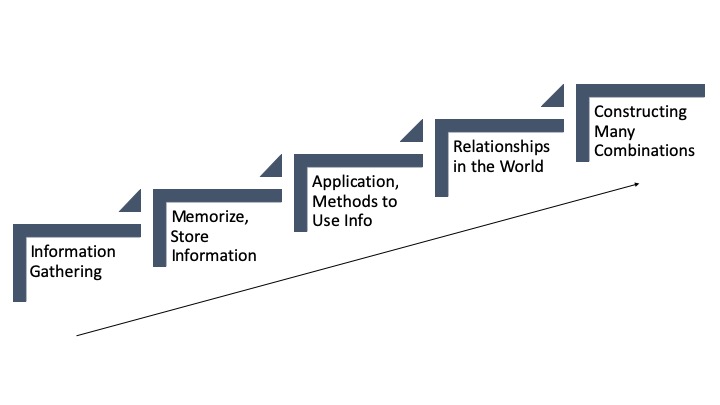6 How Surface and Deep Learning Works
Everyone can learn and you are learning all the time. How can you apply this to your studies?
You Choose Your Approach to Learning[1]
Approaches to learning describe what you do when you are learning and why you should do it. The basic distinction is between a Deep approach to learning, where you are aiming towards understanding that allows you to use and reuse the information in a variety of situations, and a Surface approach to learning, where you are primarily memorizing material for the tests and exams. Deep and Surface approaches are not attributes of individual learners. You may use both approaches at different times, although you may have a preference for one or the other in some circumstances.
These terms do correlate fairly closely with your motivation: deep with self (intrinsic) motivation and surface with external (extrinsic) motivation, but are not necessarily the same thing. Either approach can be used by a person with either type of motivation.
A surface approach is useful when you are in the early stages of learning new material as there will always be terminology and formulas to be acquired along with basic concepts to be learned and practised until they become embedded and reflexive. When you are studying material that you know will be an integral part of your profession in the future, you will want to concentrate on deeper approaches where the context and connections become more complex over time.
These are the basic steps in the process of learning:
- An increase in knowledge by acquiring individual pieces of information.
- Memorizing, storing, and retrieving information that can be reproduced.
- Acquiring facts, skills, and methods that can be retained and used as necessary.
- Making sense and meaning – this involves relating parts of the subject matter to each other and to real world situations.
- Constructing mental maps in different ways understanding the subjects by re-interpreting knowledge in numerous combinations.
The trick is not to think that the first three (surface) steps are all that you need. They are the foundation that you will use to build your deep understanding in higher steps (4 & 5) through course activities applied with personal analysis and thoughtfulness.

|
Deep Learning |
Surface Learning |
|
|
Definitions |
Examining new facts and ideas critically, and tying them into existing cognitive structures and making numerous links between ideas. Knowledge transforming. |
Accepting new facts and ideas uncritically and attempting to store them as individual, unconnected, items. Information reproducing. |
|
Features |
Looking for meaning. |
Seeing course content as material to be learned for the exam. |
|
How to Apply |
Have an intrinsic curiosity in the subject. |
Issues arise when you stop here: • Study only for individual exams. |
Questions:
- (Compiled from Biggs (1999), Entwistle (1988) and Ramsden (1992) and adapted from http://exchange.ac.uk/learning-and-teaching-theory-guide/deep-and-surface-approaches-learning.html ) ↵

